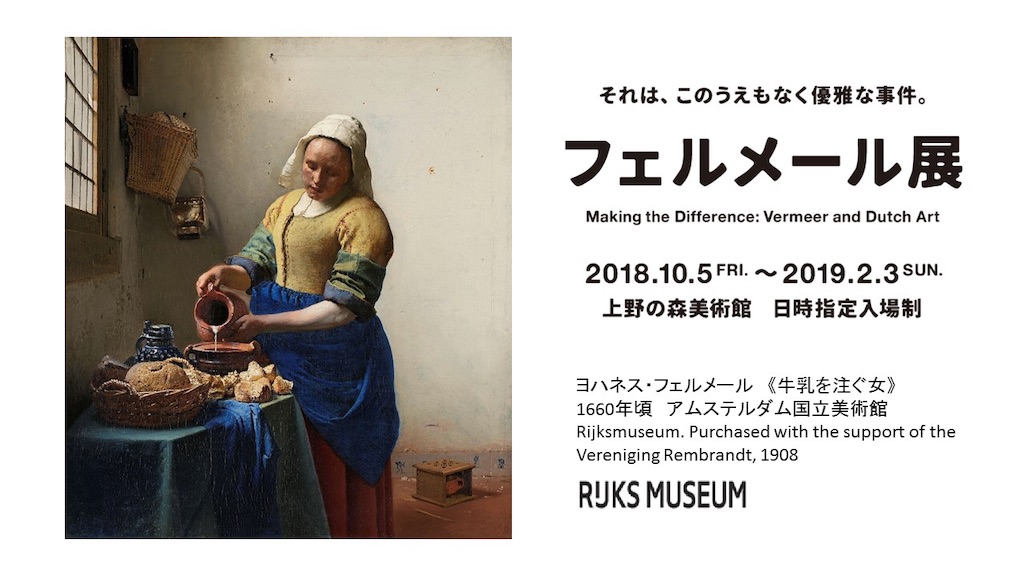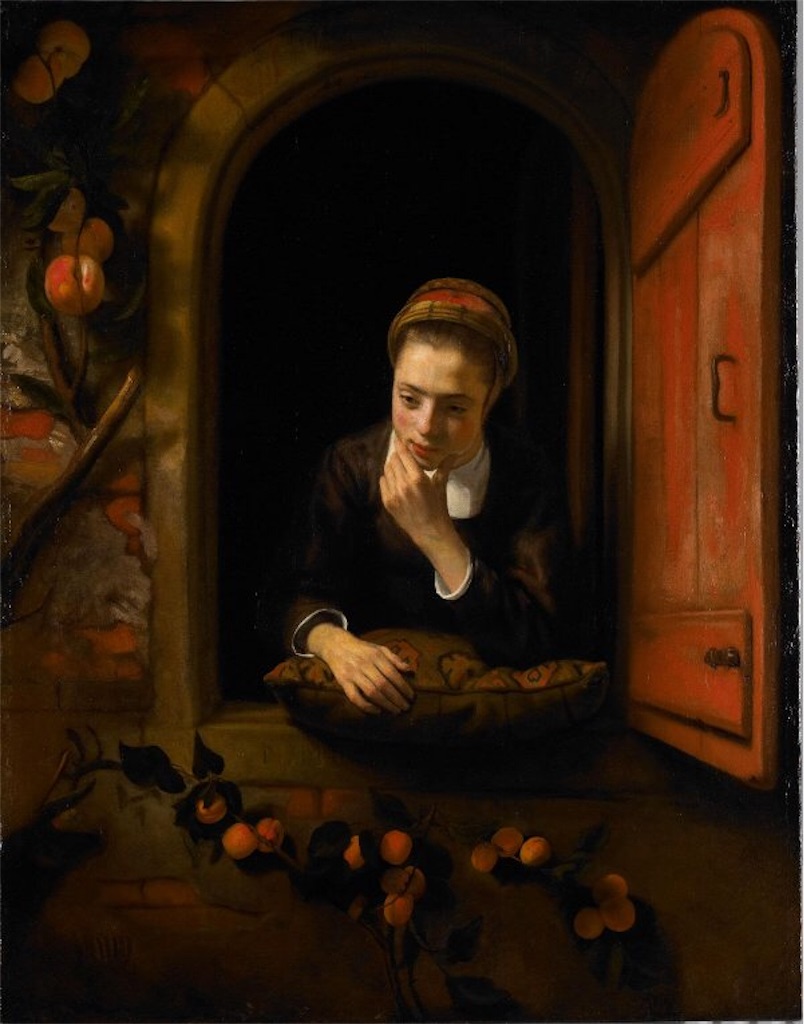ありふれた日常に潜む詩情 The Hidden Poetry in the Ordinary

画集に載っているものはある意味で「再現」に過ぎないです。本物を見ると改めてそれを痛感します。友人と一緒に来日中の「フェルメール展 」を観に行ったとき、まさにその思いがしました。本展示会では「光の魔術師 」と称されることもあるヨハネス・フェルメールの僅かの35作品のうちなんと9作が集結され、それと一緒に他の17世紀のオランダの黄金時代の巨匠の傑作も紹介されています。
The works of art we see in book collections are no more than "reproductions". We are painfully reminded of that we see the real thing. This is exactly what I thought when I went to see "Making the Difference: Vermeer and Dutch Art with a friend. This exhibit brings together nine of the mere 35 existing works of Johannes Vermeer, often referred to as the "Master of Light", along with masterpieces from other Dutch painters at work in the Dutch Golden Age of the 17th century.

ハブリエル・メツ―「手紙を読む女」(アイルランド・ナショナル・ギャラリー、ダブリン)
Gabriel Metsu "Woman Reading a Letter" (National Gallery of Ireland, Dublin)

ヨハネス・フェルメール「手紙を書く婦人と召使い」 (アイルランド・ナショナル・ギャラリー、ダブリン)
Johannes Vermeer "Woman Writing a Letter, with Her Maid" (National Gallery of Ireland, Dublin)
「光の魔術師」と称される一方、フェルメールがその光と共に存在する「陰」を巧みに扱え、その「光と陰」の共演でミステリアスな緊張感をたたえた静謐な空間を醸し出しましす。稀にないこの機会でその共演を自分の目で体感し、思わずにその世界にのめり込まれました。カラバッジョと同様に、「光」と「闇」は相互の関係を持っていることを熟知し、その組み合わせを上手く活かします。窓辺から差し込む光に当たるものは照らされると同時に、陰を作ります。「光」と「闇」は表裏一体の存在であることをフェルメールの作品を通して窺えます。ありふれた暮らしの中の深い静寂な瞬間を切り取って、「光」と「陰」が互いを際立たせることによりそこに潜む詩情が見えてきます。
Although he is considered to be the "master of light", Vermeer expertly employs the "shadows" that exist with this light. He takes this collaboration of light and shadow to create tranquil spaces filled with mysterious sense of tension. I took advantage of this rare opportunity to take this in with my own eyes, and found myself completely absorbed in his world. Just like Caravaggio, he truly understood the mutual relationship between light and darkness, and deftly employed the two in his works. The light shining through the window illuminates the objects it hits, while those objects then cast shadows. Vermeer's works show us that the "light" and "dark" are two sides of the same coin. He literally cuts deep moments of tranquility right of the ordinary, accentuating the contrast between "light" and "shadow" in a way that allows us to see the inherent poetry of it all.

ヨハネス・フェルメール 「ワイングラス」(ベルリン国立美術館)
Johannes Vermeer "Wine Glass" (Staaliche Museen zu Berlin)
カメラで撮った写真には確かに現実そのものが映していますが、油彩の作品と比べて何か物足りない気がします。油彩の作品では絵具が厚みと立体感を作り出し、「筆」で描かれることを念頭に置いてみると、些細なことに目が行きます。それはまた芸術の醍醐味でもあります。フェルメールの時代の日本は江戸時代であり、日本来航を許された唯一の欧州勢はフェルメールのオランダでした。もしフェルメールが江戸時代の日本を訪れたらその日常は彼の筆の通してどのように描写されたかを想像するとワクワクします。
Reality is indeed reflected in pictures taken with a camera, but they lack that something we find in oil paintings. The paint adds an extra layer of texture and three-dimensionality, and the fact that we know it was created with a brush causes us to take note of the finer details. That is what makes art so wonderful. Japan was in the Edo Period when Vermeer was alive, and his native Holland was the only European power allowed to call on Japanese ports. The thought of Vermeer coming to Japan during that era and painting the sights he saw fills me with excitement.

ヨハネス・フェルメール 「真珠の首飾りの女」(ベルリン国立美術館)
Johannes Vermeer "Woman with a Pearl Necklace" (Staaliche Museen zu Berlin)

ニコラス・マース「窓辺の少女、または''夢想家''」(アムステルダム国立美術館)
Nicolaes Maes "Girl at a Window, Known as 'The Daydreamer' " (Rijksmuseum, Amsterdam)